I am trying to build up an custom table view.

As you can see in the picture, I set the width of the label by default as 160 point in side the story board and change the width on the fly when the table is loaded. I am implementing this by modifying "cellForRowAtIndexPath" delegate method.
So based on the length of the date, I am setting the width of Label1 to maximum utilise the real estate on the phone screen.
CGFloat timeStampWidth = [cell.timestamp.text sizeWithFont:cell.timestamp.font].width;
CGFloat ksCompanyNameLableMaxWidth = 235;
NSLog(@"timeStampWidth:%f", timeStampWidth);
CGSize companyNameLableSize = CGSizeMake((ksCompanyNameLableMaxWidth - timeStampWidth), cell.companyNameLabel.frame.size.height);
CGRect newFrame = cell.companyNameLabel.frame;
newFrame.size = companyNameLableSize;
cell.companyNameLabel.frame = newFrame;
But when I load the app, all the label1s are set as 160 point as set in the storyboard although by debugging I have seen my code get executed for each cell.

To my surprise, if I scroll down and scroll back up again. The block of code is getting called again and the label is set as I wish.

Moreover, if I switch between the tabs, the label is restored to the abnormal status again.
